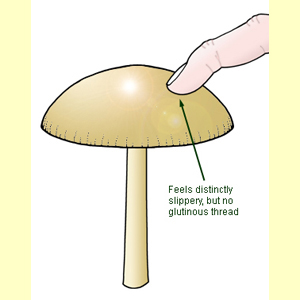
This feature must be observed on very fresh material in excellent condition. In dry, hot or windy conditions the surface of the pileus will rapidly dry out and any sliminess will disappear. When a viscid or glutinous pileus has dried out, fragments of leaves or litter (or even small invertebrates) can often be seen sticking to the pileus surface; in a dry or moist pileus such fragments are readily blown away or brushed off. Another sign of a viscid or glutinous pileus that has dried out is that the surface may be shiny (as if varnished), although this is not always due to dried slime. If you suspect that the pileus has dried out, look around for fresher fruit-bodies under leaves or litter, or in other more protected microhabitats.
If the surface is buttery or waxy, choose dry or moist.
